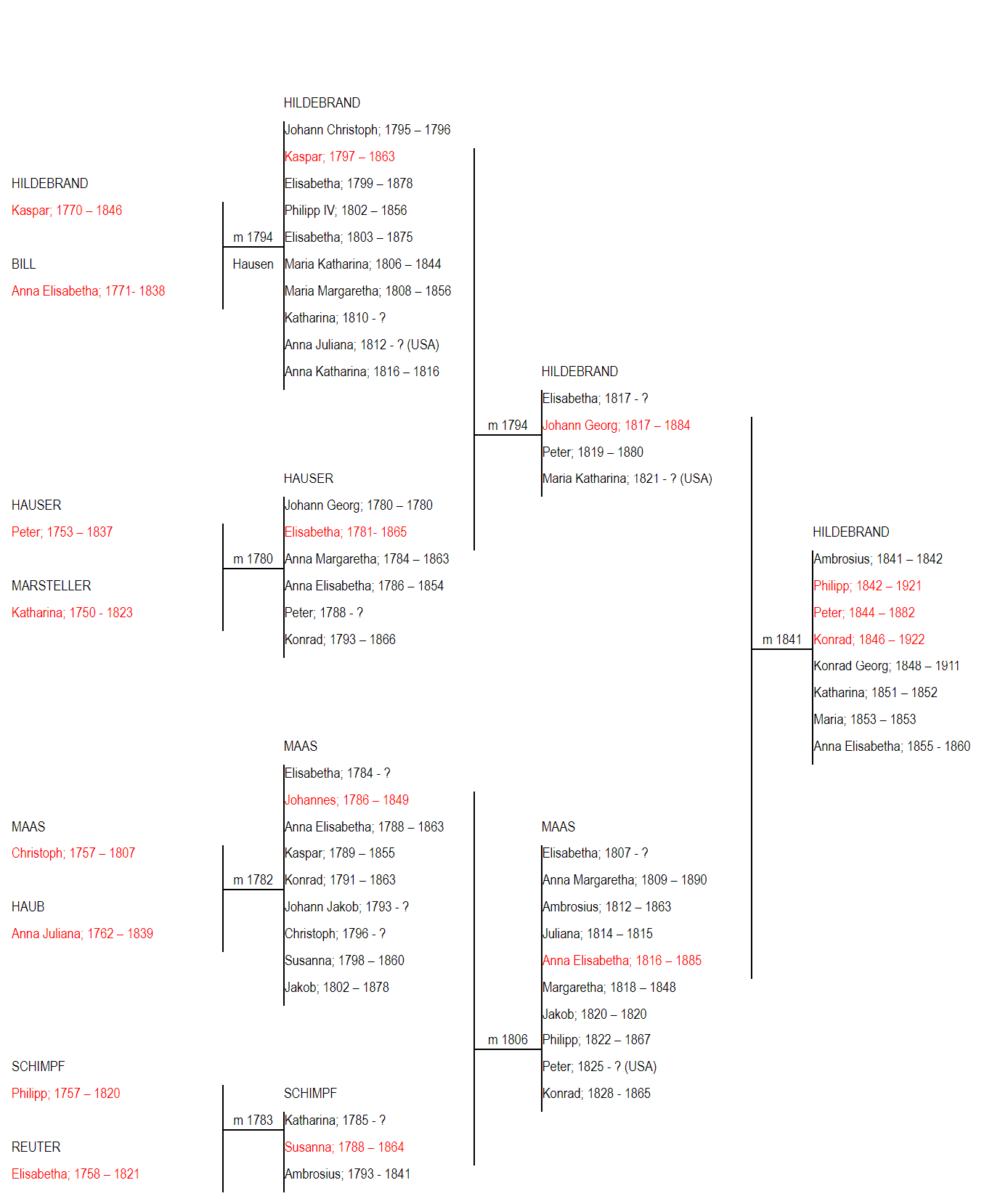Philipp HILDEBRAND 1842-1921
Philipp came to Victoria with his father Johann Georg Hildebrand. They reached Hobart Town on board “Sir W F Williams” after a very turbulent passage from Liverpool of 85 days. They continued on to Port Phillip in the steamer “City of Hobart”, disembarking on the last day of August in 1857.
Philipp was nearly 15 years of age when he emigrated, having been born in Nieder-Weisel on 10th October 1842, a year after the birth of a brother, Ambrosius, who did not live. His younger brothers, Peter and Konrad, came out later whilst the mother, Anna Margaretha nee Maas, remained in the village with the youngest surviving son and his sister.
Johann Georg and his son covered on foot the 100 km or so to the central goldfields and joined the hundreds of thousands of diggers already searching for gold. They pitched their first camp at Smythesdale, to the west of Ballarat.
In 1875, Philipp married Margaret Fanning in Ballarat. The bride, a daughter of Irish migrants who arrived in Port Philipp in 1838, was born in Brunswick, north of Melbourne, in 1855.
Philipp applied for a licence to farm in the Bawawm area, but was not successful. He continued mining at Springdallah, where Bertha Ann, their first child, was born. In 1876, Philipp took up 130 ha of land on the Box Creek, a tributary of the Murray River between Gunbower and Echuca. With as many of their belongings as the dray could hold, they made the long and tiring journey north. A second daughter, Ethel Alice, was born at Torrumbarry in 1878.
The selection was a bad one; heavy timber and scrub so dense that a person could easily become lost in it made its clearing a time-consuming and arduous task. Even with help from Margaret and from his father it took Philipp four years to partly clear the lot and to fence it. He built a two-room home, with weatherboards of hard red gum, and a barn to shelter the farm animals. He constructed a 25 kl dam to provide water. Even after some of the land was under cultivation, droughts and crop failures kept the income far below subsistence levels and Philipp had to arrange deferment of rental payments. Even so there were times when it was only gifts of food from Konrad, then living at Millewa, which kept the family going.
To augment their income, Margaret raised fowls and sold her dairy produce as far away as Pyramid Hill, 25 km to the south. Philipp periodically sought paid labouring work elsewhere in the district and it was during one such absence that an epidemic of diphtheria swept through the scattered community. By the time he returned to the farm Margaret, who was pregnant with their next daughter, had buried Ethel, her younger sister Lotta and their brother Philipp. Bertha escaped only because she was staying with her cousins.
Philipp and Margaret had three more children after Mabel was born in that tragic year of 1887 – George Richard in 1890, Florence in 1893 and Edith in 1896. All were born in the 6m by 4m cottage that would serve as the Hildebrand home for two decades. Slowly, their living conditions improved – in later years, Margaret could still recall the satisfaction she felt when she had finally saved enough jute bags to cover the dirt floor of their home entirely.
Bertha died in 1901 but the other three daughters married, as did George, who eventually took over the farm when Philipp’s eyesight failed. The couple retired to Cohuna, where Philipp died in 1921. Margaret survived him by twenty-one years, and became the oldest resident in the district. The property they struggled for so long and with such effort and determination to develop continues to provide for their grandchildren and great-grandchildren a livelihood that is a fitting tribute to their pioneering spirit.
View Philipp's Family Chart

